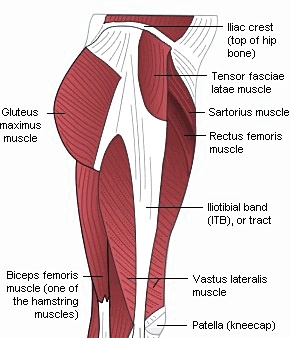
Glute
weakness and your brain’s control over its contraction strength along with it
in the activation pattern have been linked to pain and injuries including but
not limited to knee pain, plantar fasciitis, ankle pain, hamstring strains and
tears, adductor strains, IT band syndrome and patella femoral syndrome (PFS).
The
glute muscles are responsible for a variety of things in terms of moving the
leg and stabilizing the pelvis. The glutes are influenced by a variety of
factors including pelvic asymmetry and soft tissue restriction, to whether or
not the foot is on or off the ground during a particular phase of movement. When
the glutes work with the abdominals the hip joint is stable, the femur is
controlled, the knee is stable, and the ankle is stable. Going through motions
the gluts are responsible not only for stabilization but extension, rotation
and abduction. Being the great compensator it is, we adapt for everything, the
body starts using other muscles to get relative motions and stability at the
hip, knee, ankle and foot. The body starts using the Hamstings, Calves,
Adductors, Quads, Psoas, Tensor Fascia Lata (TFL) to take over for the glutes.
There is
a growing body of research that shows that in both athletes and non-active
populations, hip strength and recruitment leads to less pain and injury
throughout the lower extremity. So the next time you are having pain in the
lower body whether while or after activity check your glutes. Make sure you are
making good use of them and making them do their part. And if you are having
trouble cuing them in take the time to make them wink ; )
If you would like more information read the article by David
Cieslowski, DPT, CSCS. “Better Skiing Starts with the Brain-Butt Connection”
from The Master Skier Cross-Country Ski Journal.

No comments:
Post a Comment